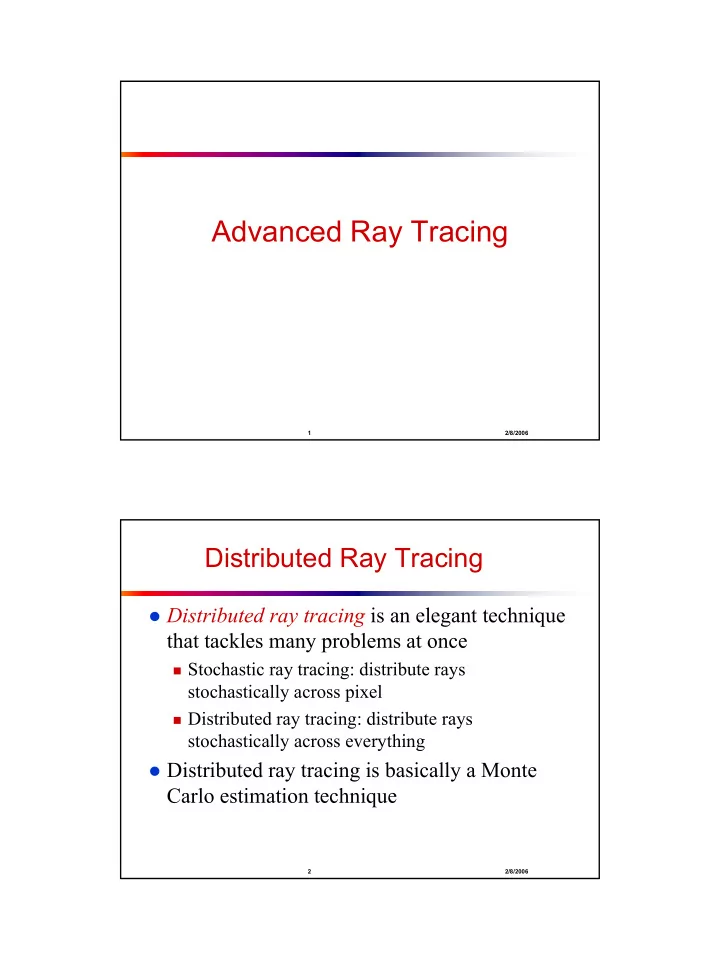

Advanced Ray Tracing 1 2/8/2006 Distributed Ray Tracing � Distributed ray tracing is an elegant technique that tackles many problems at once � Stochastic ray tracing: distribute rays stochastically across pixel � Distributed ray tracing: distribute rays stochastically across everything � Distributed ray tracing is basically a Monte Carlo estimation technique 2 2/8/2006
Distributed Ray Tracing � Distribute rays stochastically across: � Pixel for antialiasing � Light source for soft shadows � Reflection function for soft (glossy) reflections � Time for motion blur � Lens for depth of field � Cook: 16 rays suffice for all of these 3 2/8/2006 � Soft Shadows 4 2/8/2006
5 2/8/2006 Soft reflections/refractions Soft reflections Soft refractions 6 2/8/2006
Motion Blur 7 2/8/2006 Motion Blur 8 2/8/2006
Depth of Field 9 2/8/2006 Backwards Ray Tracing � Traditional ray tracing traces rays from the eye, through the pixel, off of objects, to the light source � Backwards ray tracing traces rays from the light source, into the scene, into the eye � Why might this be better? 10 2/8/2006
Backwards Ray Tracing � Backwards ray tracing can capture: � Indirect illumination � Color bleeding � Caustics 11 2/8/2006 Backwards Ray Tracing � Usually implies two passes: � Rays are cast from light into scene � Rays are cast from the eye into scene, picking up illumination showered on the scene from the first pass 12 2/8/2006
Backwards Ray Tracing � Q: How might these two passes “meet in the middle?” 13 2/8/2006 Backwards Ray Tracing � Arvo: illumination maps tile surfaces with regular grids, like texture maps � Shoot rays outward from lights � Every ray hit deposits some of its energy into surface’s illumination map � Ignore first generation hits that directly illuminate surface ( Why? ) � Eye rays look up indirect illumination using bilinear interpolation 14 2/8/2006
Different Paths = Different Methods � Consider all light paths: L(D|S)*E � These can be broken in different sets, and each set solved separately � LDS*E: Eye ray tracing – direct illumination � L(S|D)*D: Light path tracing � DS*DS*E: Extended eye ray tracing � LS+D: Caustic paths � DS*E: Eye ray tracing – indirect illumination � Many other possibilities 15 2/8/2006 Advanced Ray Tracing Wrapup � Backwards ray tracing accounts for indirect illumination by considering more general paths from light to eye � Distributed ray tracing uses a Monte Carlo sampling approach to solve many ray-tracing aliasing problems 16 2/8/2006
Recommend
More recommend